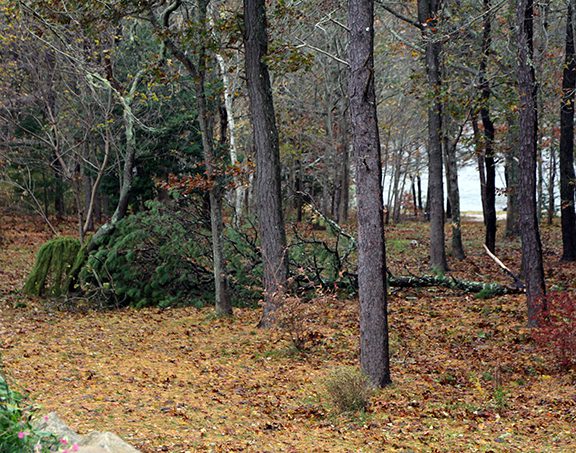Dealing With Damage
Dealing With Damage
To Help With General Recovery
Apply an inch or two of compost or composted manure to cover exposed roots and to help with root regeneration this fall and a healthy soil next spring.
Leaning/Flattened Plants
Pull plants back to their former position and use a staking kit or materials to hold them in place. Leave this through the winter, but remove cables in early summer of the following year so that they don’t end up choking the plant. Be sure to cover the roots that became exposed and water the plant in well to settle it back into place.
Salt and Wind Burn
Plants that are burned by salt and wind will shed the most damaged foliage if they haven’t lost it already. Rinse off evergreens as soon as the storm lessens. Any plants with severe salt burn will drop their leaves sooner or later but most should grow new foliage in the spring. Wait to prune until next May when you’ll know if there was any stem damage.
Broken Branches/Split Trunks
Any branches that are broken should be removed from shrubs and trees so that there is a clean cut: jagged wounds are places where moisture collects and diseases can grow. Make cuts slanted, as vertical as possible, so that water can’t pool on that exposed area. No tar or paint is needed for tree and shrub wounds.
Perennials
With the exception of woody plants such as lavender and Russian sage, cut damaged perennials down to the ground to improve the look of the garden. Mulching with compost or composed manure now will help plant growth in the spring.
Call us if you need further help: 508-775-8703

4 Comments
Leave a Comment
Subscribe To Our Newsletter
Sign up for our weekly email about sales and events.

So enjoy getting these informative newsletters!
Definitely support buying from local garden centers
Especially support wonderful Country Garden
And informed people who work there!
Pat McDonald
Thanks, Pat! It’s great when people support their local businesses first.
Thank you this is very helpful. Since I don’t have mulch can hay be used?
Hay can be used for protective mulching but you don’t want to put it down before the end of December – Hay applied too early provides a place for voles and mice to live and feast off of your plants.